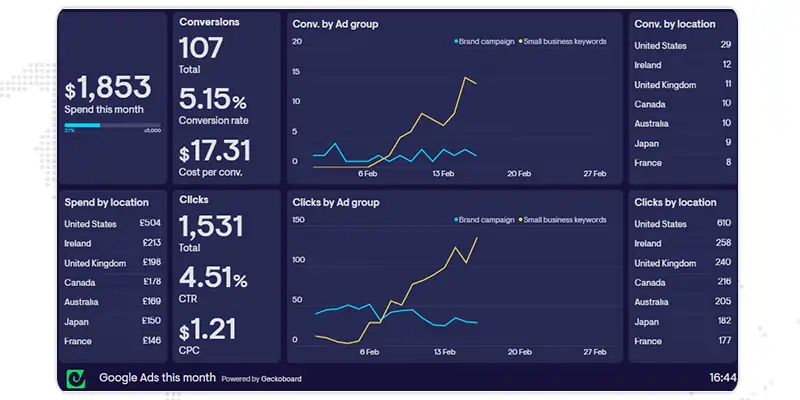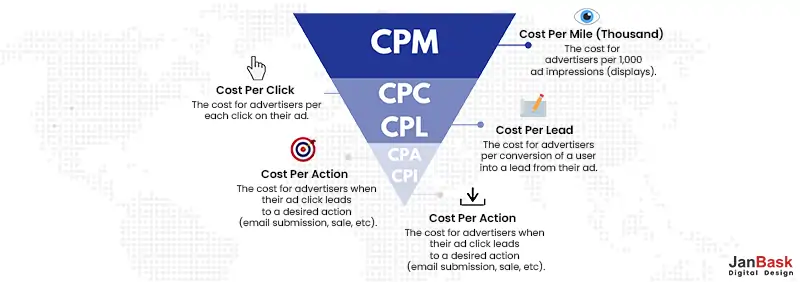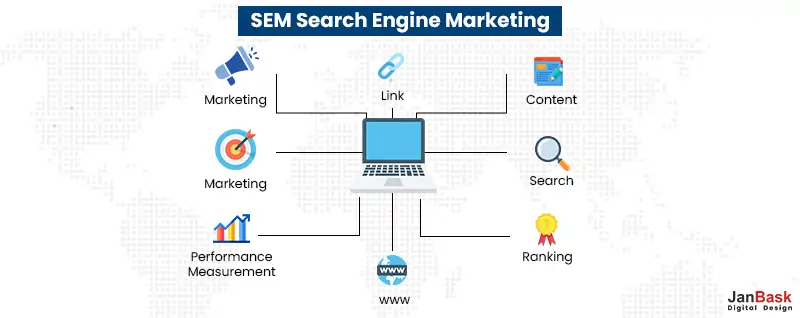
Gone are the days when people used to buy products based on newspapers or TV ads. Now the whole cycle of shopping and purchasing goods has been irrevocably changed by the internet. It has also changed the way businesses market and sell. The emergence of multi-channel has created opportunities to engage, contact, and reach more customers. This unprecedented growth led to a surge of 43% in 2020!
Today's marketers have this amazing capability to collect campaign data around-the-clock and monitor results in real time by hiring a professional digital marketing services provider for an effortless journey. While attribution was practically impossible in the past, data transparency today allows marketers to improve the performance of their campaigns.
 The term "performance marketing" refers to the online campaigns in which advertisers pay marketing firms or advertising networks based on the outcomes, such as clicks or conversions.
The term "performance marketing" refers to the online campaigns in which advertisers pay marketing firms or advertising networks based on the outcomes, such as clicks or conversions.
Performance marketing is deployed specifically to promote activities and track and measure those actions, all while assigning the ROI of each asset, campaign, or activity as compared to traditional and organic marketing
Organizations may spend millions on branding, but the majority of businesses must focus on the bottom line to be profitable. Performance marketing gives the advertiser control over the ad spending and tracks the performance. Choose your activity, and pay when only when it is complete, whether it's a sale, lead, or click.

In the majority of traditional forms of advertising, an upfront charge is paid by the advertiser for ad space independent of performance. That can entail spending thousands, perhaps even more, without ever seeing a convert. Performance marketing entails payment from the advertiser only when the success metric (conversion, action, or transaction) is achieved.
Build a Strong Performance Marketing Strategy Today!

Brand awareness is crucial because it helps businesses stand out in a market that is becoming too cluttered with new brand launches every single day. There are a variety of ways to increase brand awareness, including social media campaigns, native advertising, content marketing, and more. Some of these may really fall under the category of performance marketing because they are measurable, and advertisers only pay when the users take a specific action.
The best recommendation to boost brand awareness would be to expose the target audience to relevant, top-of-the-funnel content that would address the audience’s problems and pain points and generate curiosity. The results of these campaigns can be easily attributed, and the advertisers would pay according to the specific budget and conversion goal; this is a form of performance marketing.
Affiliate marketing is unquestionably a subset of performance marketing, as it is totally driven by goals and metrics. A commission is made when a company’s product or service is promoted online through affiliate marketing.
The affiliate marketers promote products on the merchant’s behalf to increase website traffic, clicks, and purchases. Only actions made by the affiliate, including clicks, conversions, or leads, result in payments.
Programmatic marketing is an automated method of buying ad space that targets the most appropriate audience at the most competitive price. Performance marketing increasingly relies on programmatic marketing as it enables marketers to purchase better placements at scale and increase their ROI.
The thorough data and analysis provided by programmatic advertising allow marketers to investigate the effectiveness of these ads and target their optimization efforts.
 A key component of performance marketing is ROI (Return on Investment); each activity and action is tracked, recorded, and compared to established KPIs.This is how campaign performance is understood, and the performance is optimized as a result.
A key component of performance marketing is ROI (Return on Investment); each activity and action is tracked, recorded, and compared to established KPIs.This is how campaign performance is understood, and the performance is optimized as a result.
The secret to effective digital marketing techniques for business growth is measurable ROI. Thus, it's crucial to track it regularly. There are a lot of performance optimization tools you can use which give your campaigns time to collect data. Data gives you insights to dig deeper to optimize your campaign more accurately and successfully.
Let's discuss some of the critical metrics and KPIs commonly used in performance marketing:
Cost per mile (CPM), sometimes known as cost per thousand, refers to the cost an advertiser pays for 1000 impressions of a digital ad. In other words, it is the cost associated with an advertisement to viewers 1,000 times. CPM merely establishes the cost of having the advertisement aired; it does not track viewer behavior or action taken by them. Some performance marketers put less emphasis on CPM and more on indicators that are directly related to taking action.
Cost Per Click is the amount spent every time a viewer clicks on an ad. CPC is a better measure of engagement than CPM because the user has taken action and clicked on the ad. When the CPC is high, the value of the conversion is higher.
For example, a luxury sports sedan manufacturer might choose to target a much smaller audience of high-potential clients who are likely to purchase an expensive car by setting a higher CPC. The cost of a click is exorbitant, but it also has a considerably bigger potential return.
Cost Per Action, or CPA, assesses the effectiveness of a campaign about a certain desired action that you want the target audience to undertake. These actions could range from downloading an ebook, buying a product, signing up for or subscribing to a service, downloading an app from the app store, etc.
CPA is one of the most important and well-liked metrics since it measures one of the most important and measurable outcomes in performance marketing: the action that potential consumers take.
This metric focuses on the “Lifetime Value” of a consumer of their association with the brand or business.
LTV calculates the projected spending of acquired clients based on their continuing activity through the use of advanced and cutting-edge techniques like predictive analysis. LTV is quickly gaining popularity as a popular metric since it helps marketers plan their overall strategy with the ultimate goal of increasing ROI.
 Performance marketing has changed over the years due to advancements in technology and changing consumer preferences and behavior. In today's performance-driven society, Digital marketing is all about "hitting the right people on the right device at the right time". Now performance marketers have more tools and targeting options than ever to build high-performing campaigns for different demographics based on their goals. Your campaign goals help you to craft your campaign message.
Performance marketing has changed over the years due to advancements in technology and changing consumer preferences and behavior. In today's performance-driven society, Digital marketing is all about "hitting the right people on the right device at the right time". Now performance marketers have more tools and targeting options than ever to build high-performing campaigns for different demographics based on their goals. Your campaign goals help you to craft your campaign message.
Search engine marketing, or SEM, is a crucial component in performance marketing and is undoubtedly worth your time and investment. Search Engine Marketing is the placement of different types of ads(Search ads, display ads, Video ads, etc) on Search Engine Result Pages (SERPs). These ads are effective as it exposes the user to highly targeted ads for the goods and services they are searching for, and there is a good possibility of capturing their attention.
Another performance marketing strategy that is also gaining popularity is native ads. Native ads are more successful than display ads because they don't look like ads and don't interrupt the user's browsing. They rather "natively" appear on the web page where they are posted.

There is no single way to perform performance marketing as there are many types of performance marketing and campaigns. However, we would showcase to you the main steps to develop a performance marketing strategy, regardless of the type or target market. Use it as your roadmap to get your performance campaign running successfully.
Before you evaluate the success of your campaign, it's essential to define your campaign goals. Whatever your campaign goals are, whether generating brand awareness, driving clicks, or bringing customers to your sales page, setting goals is the very first thing that you should do, and this is the very foundation of performance marketing.
Many ad platforms ask that you define your goals before setting up your ads or creating any campaigns. Decide your campaign goals and also where and to whom your ads will be shown. So always define your goal first before proceeding further.
The most popular digital marketing goals are:
Once your campaign goals are set, you may use ad platforms to build campaigns that specifically aim to achieve those objectives.
it is always advisable to diversify the channels that you use instead of concentrating exclusively on one channel while employing performance marketing. This expands the campaign's exposure and reach and also raises the likelihood of its success. If you want to reach your target audience, look for channels that specialize in your conversion type, whether it be through affiliate marketing, native advertising, or social media platforms.
You can significantly enhance your potential reach and make your performance campaigns visible to a far larger audience by diversifying on other social media networks, for instance, or moving beyond simple display ads to native advertising.
The effort that goes into performance marketing campaigns mostly consists of defining the target market, understanding their problems and pain points, and developing Bing or Google Ads and messaging that will appeal to them.
The more you understand your target audience and how they look at your product and services, and what appeals to them in reaching out to you, the easier it will be for you to come up with the best ad images, headlines, and descriptions. Of course, the specific platform or channel you want to utilize will also affect the technical aspects of the campaigns, including ad widths, copy character restrictions, and creatives.
The real job starts post-launch. Performance campaigns start generating data as soon as they are operational. The performance marketer is responsible for maximizing each campaign's effectiveness across all active channels to deliver the ROI.
Analyse metrics and analytics to discover the sources of traffic that are performing best and utilize the budgets accordingly. Stop those campaigns which aren't performing, and you can divert those budgets to the ads that are successfully performing to generate more return on Investment.
Performance marketing poses numerous challenges and difficulties, just like any other marketing strategy. They may consist of:
You can possibly minimize these potential challenges by focusing your resources on high-quality advertising networks and platforms, where concerns like brand safety and data privacy are handled responsibly and reliably.
Performance marketing is best illustrated through native advertising, where advertisers create ad campaigns with a specific conversion goal in mind. Contrast this with TV ads, for instance, which air at a specific time and frequency but whose viewership and response rates are unpredictable.
This focuses on the core benefits of performance marketing. Tracking and attribution are essential aspects of performance marketing. It gives marketers more control over spending and returns on investment.
Performance marketing is the new marketing for the top three reasons listed below:
Performance that is easy to track and monitor: Performance marketing campaigns are set - up with the specific intent of monitoring and measuring. Keeping an eye on performance campaigns and modifying them to get better outcomes is simple with the help of numerous data analytics tools created especially for performance marketers.
Minimal risk: Marketers are in a far better position to optimize and decrease risk when necessary since they always know exactly what is happening with their performance initiatives. Moreover, quicker launch times are achievable with lower risk.
ROI-driven: As performance marketing is driven by ROI, performance improvement is always the ultimate objective. This guarantees that performance campaigns are always striving for improved outcomes, elevating the brand across all metrics and boosting leads and revenue.
Performance marketing is far more adaptable, trackable, and measurable than traditional marketing strategies. Campaign success parameters such as the number of impressions and clicks received from different demographics, geographies, age groups, genders, and interests, marketers can further fine-tune their online marketing campaigns and promotional strategies to make them more budgetary friendly.
It is a unique, imaginative, and effective way to reach a large audience, particularly for small and medium-sized businesses with limited marketing resources. They can also be tailored to be highly targeted and enable future consumer engagement via a database created from the campaigns.
For large businesses, offline branding efforts and an online performance marketing plan can be integrated easily to achieve better results. Performance marketing increasingly appeals to marketers as it is more result oriented and also doesn't need larger budgets as needed in advertising in electronic and print media.
Since online marketing services have become increasingly popular, many players have emerged, promising clients a set amount of leads or inquiries for the business or an ensured top page ranking in Google and other search engines. However, given the constantly evolving algorithms of social media and search engines, such claims should be evaluated thoroughly before making any financial commitments. The marketer should perform some research and manage the budget carefully before making any commitment.

Looking for Online Marketing Services?
1. What is the purpose of performance marketing?
Performance marketing enables companies to track performance and determine ROI, resulting in the more effective use of advertising budgets. Advertisers can target particular audiences and monitor the success of their ads, allowing for more precise targeting and more efficient resource allocation.
2. What comes under performance marketing?
The term "performance marketing" refers to online campaigns in which advertisers pay marketing firms or ad networks based on the outcomes, such as clicks or conversions.
3. Is performance marketing a PPC?
Performance marketing used to simply refer to PPC (pay per click) or CPC (cost per click) campaigns, but now it has evolved to undertake impressions and views on a CPM (cost per thousand) basis in addition to engagement or click-through rates. As a marketer, you place an ad and pay when the desired action is completed.
4. Does performance marketing include SEO?
Performance marketing has expanded and now includes any marketing strategy that enhances your brand. Email marketing, search marketing (SEO and PPC), conversion rate optimization, content marketing, and many others are critical areas of attention.
Leave a Reply